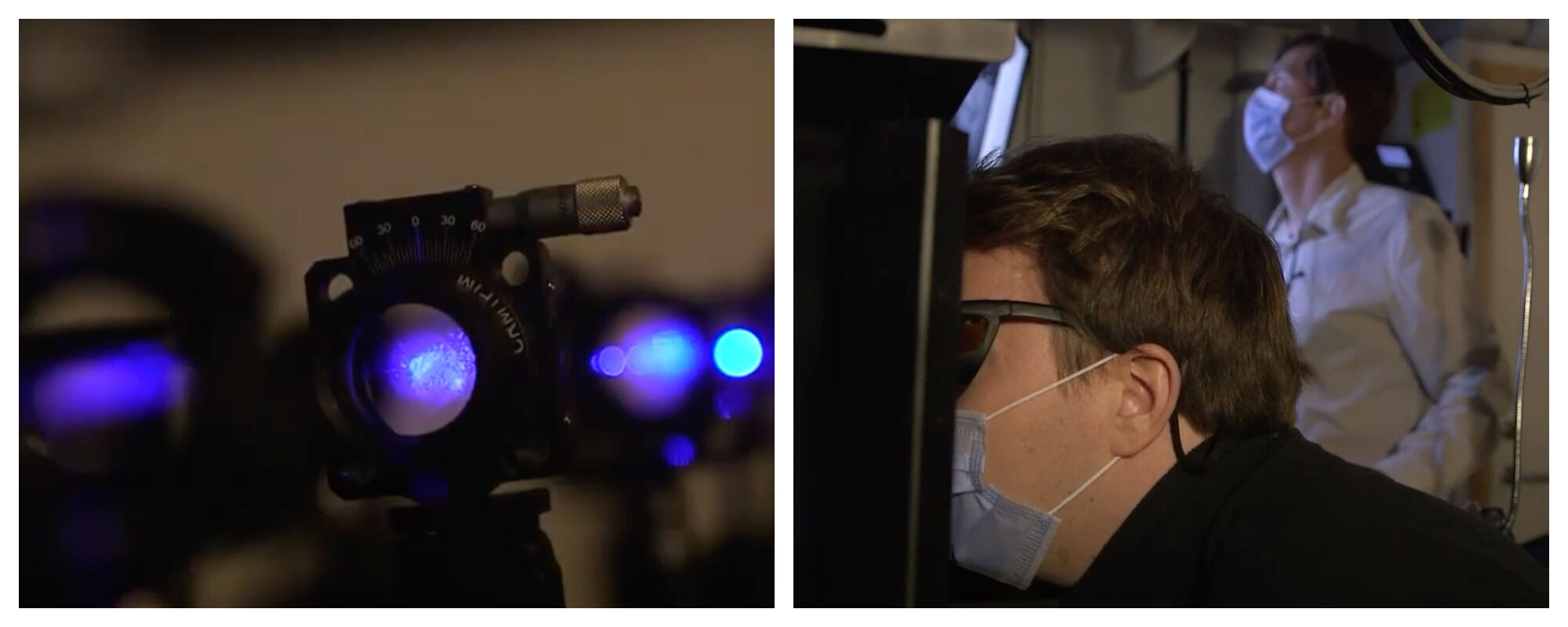85 per cent of cough droplets blocked by surgical mask, experiment shows
Researchers at LTH have recorded coughs resolved at high temporal resolution - 8,000 images per second - and high detection sensitivity, using laser light scattering. This enabled them to count the number of droplets as well as measure their speed with high accuracy. The preliminary results show that only 15% of droplets pass through a low-cost surgical mask. In addition, those droplets were usually smaller and could be considered aerosols.
– Published 17 December 2020

Scientists still disagree to what extent it is droplets, or much smaller aerosols, that are responsible for the transmission of SARS-CoV-2. Not only that, but the droplets generated from a cough or speaking quickly transition into aerosols as the water in saliva evaporates rapidly over time. The formation and behaviour of these airborne aerosols – containing virus particles – is poorly understood. Additionally, the number of virions encapsulated within coughed droplets as well as the number of virions needed to start an infection remain two important questions.
WATCH: Experiment measures droplets generated by cough at the Spray & Imaging lab (on YouTube)
“Our contribution has been to look at independent coughs in great detail. One interesting find was that the number of droplets generated varied significantly between different people. This offers one potential explanation as to why certain infected people are ‘superspreaders’ and others are not”, says Edouard Berrocal, senior lecturer at the Division of Combustion Physics at Lund University.
The research team usually study spray systems used for the injection of liquid fuel in engines. They therefore develop and work with state-of-the-art laser imaging techniques that are used to measure the size, velocity and concentration of droplets in 2D or 3D.
“Other studies have found that surgical masks block 90-95% of a cough, but we believe our result may differ slightly because our measurement sensitivity was higher. Also, measuring the number of droplets is different from measuring the total amount of liquid”, comments Adrian Roth, the Ph.D. student who developed the image analysis algorithm for droplet counting.
One factor not taken into account is that the efficiency of a disposable mask might vary from one type to another and is believed to reduced after wearing it for a period of time, as it gets humid. Another important parameter related to why the virus spreads better in the winter can be linked to the evaporation rate of the droplets and their exposition to U.V. light.
“Depending on the temperature and humidity, droplets are not evaporating at the same rate. A reduction in evaporation might better protect encapsulated virions”, says David Frantz, the PhD student who contributed to the design of the experiment.
“There is still a lot we need to understand about how this virus spreads. Our next step will be to estimate the size of exhaled and coughed droplets, their positions in 3D and their initial velocities. Such detailed experimental data is necessary for simulating the probability of having those droplets/aerosols being in contact with other people for various situations”, concludes Edouard Berrocal.
About the experiment
To visualize cough droplets the technique employed was based on high-speed imaging, (8000 images per second) of the light scattered by droplets when crossing a laser sheet (120 mm high and 1.5 mm thin). In addition to the high temporal resolution allowing slow motion imaging, a specificity of the experiment was that light was not collected at 90 degrees, but at 55 degrees from the laser incident direction. This configuration provided high detection sensitivity as micrometric droplets scatter light mostly in the forward direction. This approach allowed for detecting the small droplets (of only a few microns in diameter) that would otherwise not be visible.
To freeze the motion of the droplets, images are recorded at 60 microseconds exposure time at every 125 microseconds; Each recording was ~2.25 seconds giving ~18 000 images per recorded coughing events.
